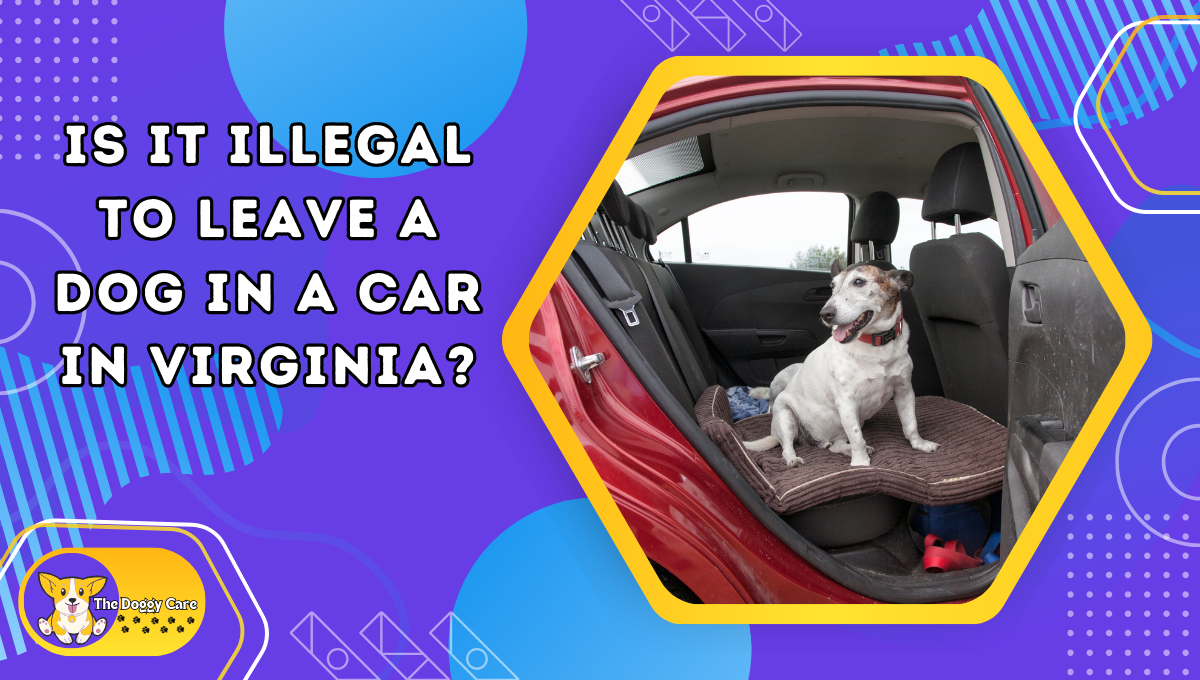Contents
Is It Illegal to Leave a Dog in a Car in Virginia? Understanding the Laws and Risks
Leaving dogs in cars, especially during hot weather, is a matter of serious concern. Not only is it potentially harmful to the animal’s health, but it can also have legal consequences. In Virginia, laws are in place to protect animals from such negligence.
Understanding the Legal Framework
Virginia’s animal cruelty laws encompass various aspects of mistreatment, including leaving animals unattended in vehicles.
The definition of animal cruelty extends to any action that causes unnecessary suffering or harm to an animal.
Specifically regarding dogs in cars, the law prohibits leaving them in conditions that could endanger their health or well-being.
Penalties for Violations
Violating laws regarding leaving dogs in cars can result in significant penalties and legal repercussions.
In Virginia, the severity of the penalties may vary depending on the circumstances and the extent of harm caused to the animal.
Individuals found guilty of this offense may face fines, and in extreme cases, criminal charges, including misdemeanor or felony charges.
These penalties are in place to deter individuals from engaging in negligent behavior that endangers the welfare of animals.
It’s essential to be aware of these consequences and prioritize responsible pet ownership to avoid legal consequences and ensure the safety of animals.
Risks of Leaving Dogs in Cars
The risks associated with leaving dogs in cars, particularly during hot weather, are significant and potentially life-threatening.
The primary risk is heatstroke and dehydration, as the temperature inside a car can rapidly rise to dangerous levels, even on moderately warm days.
This is exacerbated by the greenhouse effect, which traps heat inside the vehicle, and the lack of ventilation.
Heatstroke can lead to symptoms such as excessive panting, drooling, lethargy, vomiting, and ultimately, collapse.
Long-term health complications or even death can result from prolonged exposure to these conditions. It’s crucial to understand these risks to prioritize the safety and well-being of dogs.
Understanding the Justifications
Understanding the justifications behind leaving dogs in cars is crucial in addressing this issue effectively.
Often, lack of awareness about the dangers or misconceptions regarding dogs’ tolerance to heat lead individuals to make this choice.
Some may view it as a matter of convenience, such as when running quick errands or facing unforeseen circumstances.
However, it’s essential to recognize that these justifications do not negate the potential harm inflicted on the animals.
By understanding the underlying reasons, efforts can be made to educate and encourage responsible pet ownership, ultimately preventing instances of neglect and harm to animals.
Alternatives to Leaving Dogs in Cars
There are several alternatives to leaving dogs in cars that prioritize the safety and well-being of the animals.
One option is to leave the dog at home when running errands or engaging in activities where they cannot accompany you.
Additionally, dog-friendly establishments such as pet stores, restaurants, and cafes often welcome furry companions, providing a safer environment for them while you’re out.
Another alternative is to utilize dog daycare or boarding facilities, where dogs can receive proper care and supervision in your absence.
These alternatives ensure that dogs are kept out of potentially dangerous situations while still allowing owners to attend to their needs.
Educating the Public
Educating the public about the risks of leaving dogs in cars is essential to prevent instances of animal cruelty.
Through social media campaigns, community outreach programs, and educational workshops, awareness can be raised about the dangers of this practice.
By providing information on the rapid increase in temperature inside vehicles and the potential consequences for dogs, individuals can make informed decisions.
Emphasizing responsible pet ownership and the importance of considering alternatives to leaving dogs in cars encourages positive behavior change.
Overall, public education efforts aim to foster a culture of compassion and safety towards animals, ultimately reducing instances of neglect and harm.
FAQs
Can I leave my dog in the car if I crack the windows?
No, cracking the windows does not sufficiently reduce the temperature inside the car and may still put the dog at risk of heatstroke.
How long can a dog safely be left in a car?
It is not safe to leave a dog in a car for any length of time, especially in hot weather. Even a few minutes can lead to potentially fatal consequences.
What should I do if I see a dog left in a car?
If you see a dog left in a car, especially in hot weather, it is essential to take action immediately. Contact local authorities or animal control for assistance.
Are there any exceptions to the law about leaving dogs in cars?
There may be certain exceptions for specific situations, such as when a dog is left in a car with appropriate ventilation and temperature control systems in place. However, these exceptions are rare and should not be relied upon.
What are the signs of heatstroke in dogs?
Signs of heatstroke in dogs include excessive panting, drooling, lethargy, vomiting, and collapse. If you suspect your dog is experiencing heat stroke, seek veterinary care immediately.
Conclusion
In conclusion, it is illegal to leave a dog in a car in Virginia under conditions that could endanger its health. Understanding the laws and risks associated with this practice is essential for promoting responsible pet ownership and preventing animal cruelty.



























